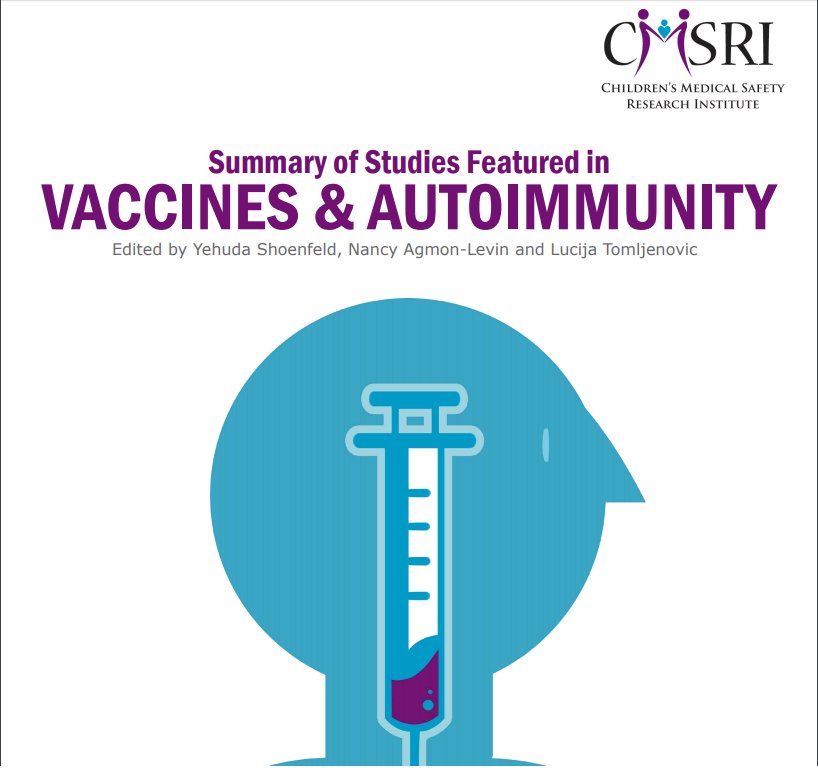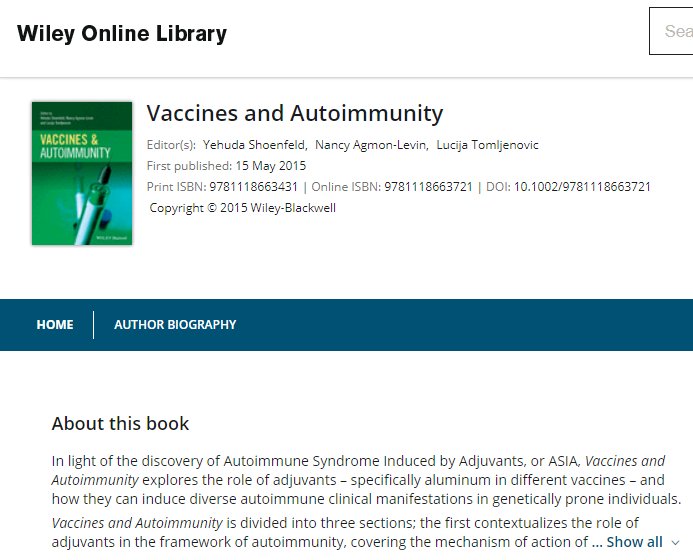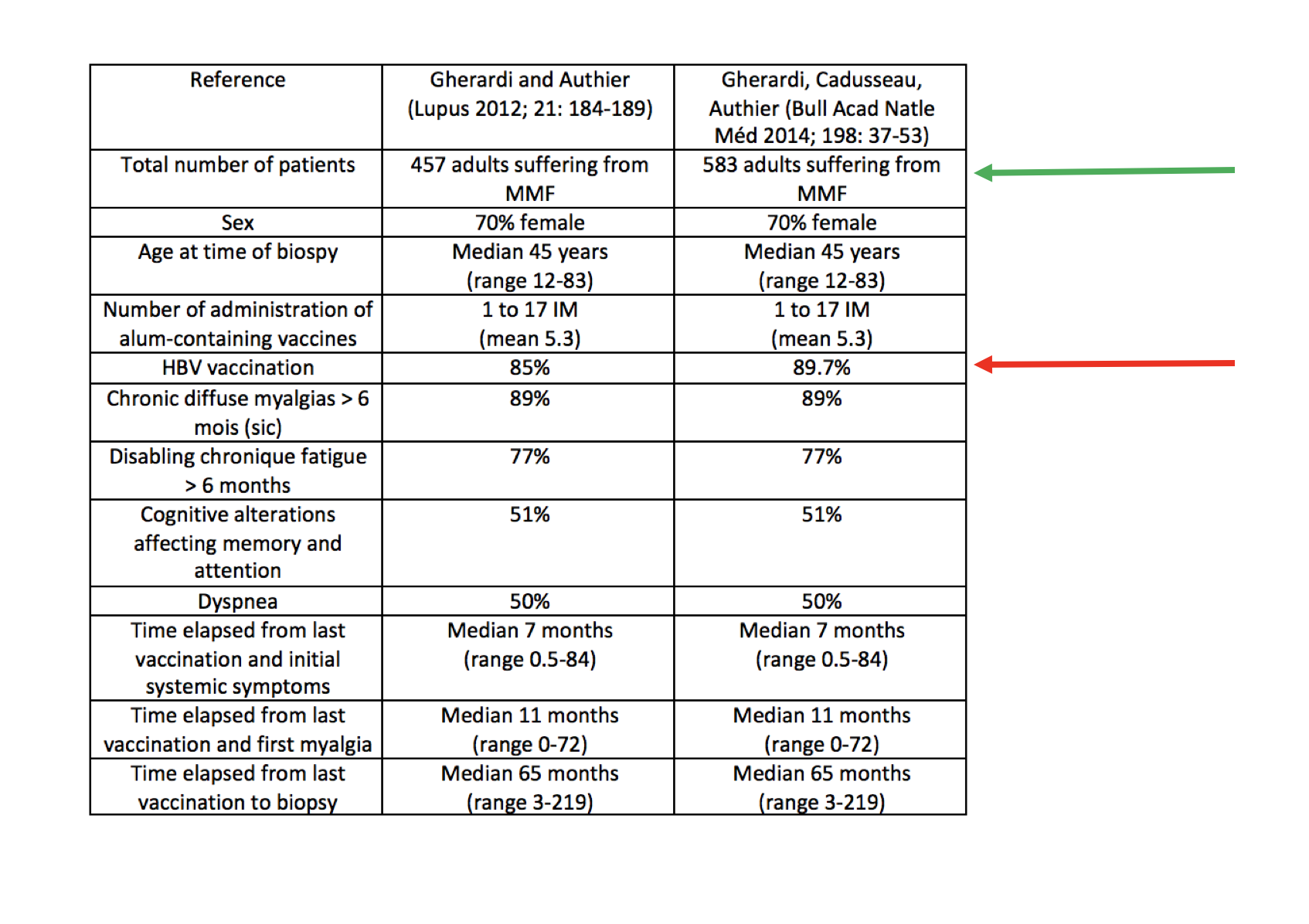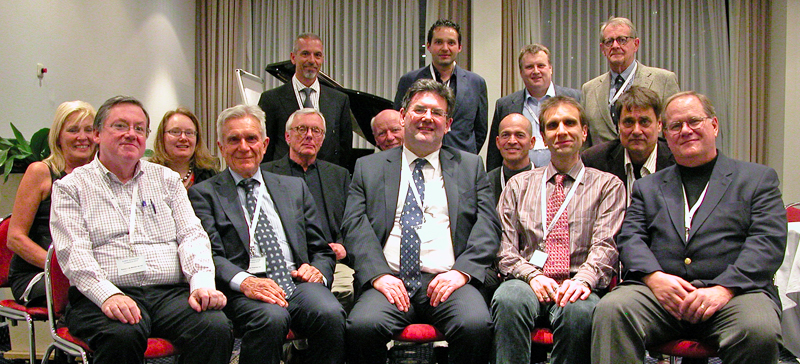This post was earlier cross-posted at Leonid Schneider's site, hence the unfrivolous tone. The version there is improved by Leonid's editing and explanation of the backstory.
Overture
Academic journals are bombarded with bad manuscripts, with contents that are plagiarised or fabricated or simply incompetent. The authors could be inflating their publication statistics, or employed at a 'paper-mill' to churn out bespoke papers for the nominal authors, or manufacturing the impression of scientific support for a political / commercial cause they promote. It is inevitable that some of these efforts, which would ideally have remained in a file-drawer oubliette or been consigned to cleansing fire, will slip past the peer-review gate-keepers and into print.In the author-funded open-access paradigm of scholarly publication, editors and journal management have a conflict of interest, and may feel encouraged to relax their vigilance to maximise the income. This is a special concern for journals from the 'Frontiers' stable, which have a multilevel-marketing aspect: reviewers (and authors) are urged to nominate 'Research Topics', with themselves as editors, while soliciting submissions from friends and colleagues. This publisher also follows a model of 'review iteration' where it is difficult for peer-reviewers to reject a submission outright, however dire it might be... if a manuscript is not eventually published, it is because the authors' persistence and patience were exhausted before the reviewers'.
So our host Leonid has had occasion to point and laugh at some of the more egregious products of the Frontiers editorial / review system. On their own, of course, these 'bread' anecdotes do not prove that the publisher is any friendlier to these embarrassments than anyone else in the Open Access world, but they are a necessary counterbalance to the Impact-Factor- and Citation-Rate-brandishing self-congratulations one encounters on the Frontiers website.
Here I propose to marshal a few more examples, arranged around the themes of 'autism' and 'vaccines'. Frontiers has a special openness to new ideas in this research area (in parallel with Henry Markram's Manhattan-Project-scale goal of simulating brain function, neuron by neuron, on a supercomputer). Back in 2007, the premiere issue of Frontiers in Neuroscience was a vehicle for the Markrams' ambitious though not-entirely-mainstream "Intense World" framing, which relied on a valproic-acid rat model of autism, and tied cortical microcolumn organisation together with either hypoactivity or hyperactivity (or maybe both) of the amygdala. See also 2009, 2010, 2015, etc.
For fairness I include some egregious cases from other publishers, and even from outside the OA domain. Some examples have been the subjects of past Riddled posts, so I can make the job easier by resorting to the fine scholarly tradition of self-citation. If some passages are worded awkwardly or incoherently, this just shows that the original phrasing was a model of literary elegance before I reluctantly rearranged the words to avoid self-plagiarism (which would be wrong).
Act 1
My first examples are only peripheral to the central theme. They were solicited by Canadian PhD Lucija Tomljenovic and her mentor Christopher Shaw, within a Research Topic of Aluminum Toxicity and Human Disease where the focus was the putative neurotoxicity of low-level exposure to aluminium compounds (especially as an adjuvant in vaccines). To be scrupulously fair, and "according to the malicious calculations of a certain critic less versed in literature than in arithmetic", the word 'autism' hardly appears. Nevertheless, these papers were intended as ammunition for the vaccines-cause-autism cause, and were weaponised accordingly by a readership of antivaccine activists who understood 'human disease' as meaning 'autism'.Aluminum is now well established as a general toxin, including neurotoxin, but its role in human disease has been downplayed in the past. This is largely due to some very incorrect assumptions about the role of aluminum in human disease. [...]The odd thing is that at some point between 2016 and now, the Research Topic was dissolved, leaving the papers still published but stripped of their unifying rubric. I do not recall that this management intervention was ever explained.
None of the above assertions are even remotely true as an abundance of recent studies now attest. The proposed series will review the literature and put aluminum's role in diseases in humans and animals into perspective.
Then
Now.
One paper is a Review. It contains little new material, existing mainly to promote the authors' earlier reports, devoid of new results or new interpretations; and to promote an otherwise-unknown medical condition, "macrophagic myofasciitis"... this is fine in blogging and science journalism, but were I reviewing the ms., I might have asked for some novel content.
But rather than me, in an unusual editorial selection of reviewers it was peer-reviewed by the soliciting editor (another reviewer, Mark Burns, moonlights as "Specialty Topic Editor for Neurodegeneration").
Edited by:
Lucija Tomljenovic, University of British Columbia, Canada
Reviewed by:
Samir Kumar-Singh, Antwerp University, Belgium
Mark P. Burns, Georgetown University Medical Center, USA
Lucija Tomljenovic, University of British Columbia, Canada
One reason to characterise the compilation (and the Frontiers paper) as 'antivax' is that in parallel with their publication, the group CMSRI circulated a Summary document containing the main points of each chapter in bullet-point form, for the convenience of activists eager to use those claims as ammunition without actually buying the book. It is natural to wonder whether CMSRI subsidised the production of "Vaccines and Autoimmunity" (Shoenfeld, Agmon-Levin & Tomljenovic, eds.; 2015).


Anyway, more about CMSRI below. Coming back to this contentious "MMF" syndrome: the same research team provided the Special Topic with a second paper ("Clinical features in patients with long-lasting macrophagic myofasciitis"), presenting their evidence to support its clinical reality as a sequela of vaccination.
Inquiring minds in PubPeer comment-threads questioned the quality of that evidence, and compared it with the same evidence as already published in 2014 (in French) and in 2012. There was puzzlement how a collection of cases could grow from 457 to 583 with only one change in the sample's demographics and incidence of various symptoms.
This was interesting, too:
Edited by:
Christopher Ariel Shaw, University of British Columbia, Canada
Reviewed by:
Harish Pant, National Institutes of Health, USA
Lucija Tomljenovic, University of British Columbia, Canada
Françoise Noële Chapon, Université de Caen Basse Normandie, France
It may be that Tomljenovic could only find one peer-reviewer willing to sign off on it, so she ended up recruiting herself for the second review.
Edited by:
Christopher Ariel Shaw, University of British Columbia, Canada
Reviewed by:
Nelson Silva Filho, Universidade Estadual Paulista, Brazil
Lucija Tomljenovic, University of British Columbia, Canada
Edited by:
Christopher Ariel Shaw, University of British Columbia, Canada
Reviewed by:
Lucija Tomljenovic, University of British Columbia, Canada
Act 2
Now without delving too deeply into the politics of autism and antivax advocacy, a little bit of background is helpful at this point. Readers of the "Rise and Fall" post may dimly recall the Children's Medical Safety Research Institute (CMSRI) as funders of a quickly-retracted study on aluminium, vaccines and autism (in mice). Doctors Exley, Shaw and Gherardi (and Shoenfeld) are prominent on the Institute's Scientific Advisory Board, enjoy its hospitality at Caribbean get-togethers, and benefit from its financial generosity. The CMSRI is essentially the operational branch of the 'Dwoskin Family Foundation', an antivax lobby-group... here the "Medical Safety" part of the name is code for "banning vaccines". For reasons unknown, foundation head Claire Dwoskin had become convinced that there are no neuroatypical or challenged children, only "vaccine damage"; also, that the appropriate response to some families' plight is a worldwide ban on disease-prevention programs.“Vaccines are a holocaust of poison on our children’s brains and immune systems.”Other families share the same opinion: convinced that (a) autism has a simple, single cause (which mainstream science is keeping secret), and (b) by the same token there is a single, simple cure for autism (similarly suppressed for Big Science's financial gain). Naturally, a ecosystem of con-men sprouted up, offering that cure... or more accurately, a series of cures (if the first five cures don't work, never despair, there is always a sixth in the scammocopoeia). Around the world, a range of regular scamborees allow desperate yet optimistic parents to hear the latest etiologies and treatments directly from the grifters... the largest of these being AutismOne, a kind of fraudster trade fair or medical-malpractice Woodstock.
We should stipulate in the interests of fairness that regular attendees at AutismOne are not all mercenary mountebanks. Some are fervently committed to helping parents and normalising autistic children, and convinced by the strength of that fervour that whatever treatment they're currently administering must bring some improvement, at least until next year. But still...
Bleach enemas!
Esoteric parasitology!
Yes, the Dwoskin Foundation does help bankroll these charlatan charivaris.
A certain Jeffrey Bradstreet epitomises this whole milieu. When life gives you lemons, make silver linings; and there is a silk purse within every dark cloud; and when life gave Bradstreet an autistic son, he turned that challenge into a career of serial fraud. From treating autism with exorcism, he pimped secretin prescriptions until that bubble burst, progressing to mercury chelation and intravenous immunoglobulin and hyperbaric oxygen tanks and transcranial magnetic stimulation and (inevitably) Ukrainian stem-cell quackery. Bradstreet was an AutismOne rockstar and anyone collaborating on any of his short-term scams comes under suspicion as well.¹ ² ³
Finally he gravitated to the GcMAF grift, before killing himself after the FBI turned up on his doorstep with difficult questions.
This all brings us to another Frontiers Masterpiece. My earlier critique of it drew upon comments from a PubPeer thread. It is a tour-de-farce of fractal stupidity and incompetence in every detail of cranial and cortical anatomy, notable for the authors' failure to read even the sources they cited.
 The novelty of the method was to dispense with a dedicated transcranial scanner (high-powered enough to send ultrasound pulses through the skull and return a signal from the cerebral interior) and use instead a standard LA523 soft-tissue scanner that was on hand, manipulating scans in Photoshop to achieve the desired appearance. Suffice to say that the technique did not catch on, with no subsequent applications.... though there were precedents, in the form of other papers by main author Ruggiero's team. What inspires me to touch on one of these (not in Frontiers, but an Italian embryology journal) is the extent of its plagiarism.
The novelty of the method was to dispense with a dedicated transcranial scanner (high-powered enough to send ultrasound pulses through the skull and return a signal from the cerebral interior) and use instead a standard LA523 soft-tissue scanner that was on hand, manipulating scans in Photoshop to achieve the desired appearance. Suffice to say that the technique did not catch on, with no subsequent applications.... though there were precedents, in the form of other papers by main author Ruggiero's team. What inspires me to touch on one of these (not in Frontiers, but an Italian embryology journal) is the extent of its plagiarism.The authors of these papers were under the impression that tissue density is what reflects ultrasound, rather than abrupt changes in density, causing them to misread the outside surface of each subject's temporal bone (smeared out by the instrument's poor resolution) as the thickness of the bone. Naturally the rest of the Maps-of-Mars of meningeal and sub-arachnoidal and cortical layers are equally meaningless artefact pareidolia, wildly variant from the accepted ranges (and probably incompatible with life), but for the authors and reviewers, this was a discovery. It may be that the reviewers lacked knowledge of the field and accepted Ruggiero's claim of expertise in radiography.
Reviewed by:Hanoch Cassuto, Leumit/Clalit HMO, Israel
Dario Siniscalco, Second University of Naples, Italy
James Brewster Adams, Arizona State University, USA
Reviewed by:Anna Sapone, Beth Israel Deaconess Medical Center Harvard Medical School, USA
Lorene Eve Aurelie Amet, Autism Treatment Plus, UK
Nicola Antonucci, Biomedical Centre for Autism Research and Treatment, Italy
Alessandra Cirillo, Alfa Intes, Italy
- Dario Siniscalco, Anna Sapone, Alessandra Cirillo, Catia Giordano, Sabatino Maione, Nicola Antonucci (2012)
- Dario Siniscalco, James Jeffrey Bradstreet, Alessandra Cirillo and Nicola Antonucci (2014)
- Dario Siniscalco, James Jeffrey Bradstreet, Nataliia Sych, Nicola Antonucci (2014)
- Dario Siniscalco, James Jeffrey Bradstreet, Nataliia Sych, and Nicola Antonucci (2013)
- Dario Siniscalco, Alessandra Cirillo, James Jeffrey Bradstreet and Nicola Antonucci (2013)
- Dario Siniscalco, Anna Sapone, ..., Jeffrey Bradstreet, Sabatino Maione, Nicola Antonucci (2013)
- James Jeffrey Bradstreet, Nataliia Sych, Nicola Antonucci, Mariya Klunnik, Olena Ivankova, Irina Matyashchuk, Mariya Demchuk, Dario Siniscalco (2014)
However, "The author declares that the research was conducted in the absence of any commercial or financial relationships that could be construed as a potential conflict of interest". Siniscalco's construal skills may need work, as his collaborations with Marco Ruggiero (and with his reviewer Antonucci) in commercial GcMAF-related autism-curing activities are well-documented: for instance, in a presentation at the 2nd Noakes / Ruggiero GcMAF-fest (Dubai 2013), and another at the 2017 Fulda Integrative Medicine Scamference:
I mention Dottori Siniscalco and Antonucci not only to question the rigor of Frontiers peer-reviewing, but also because they pimp for stem-cell fraudsters, referring desperate families to clinics in Ukraine. This gives me an opportunity to mention this egregious bolus of quackery:
While not actually wrong in any obvious way, new content is absent, blurring the boundary between a science journal and a paid-press-release advertising service like PRWeb.
Entr'acte
These authors explicitly ruled out searching for a link between vaccines and autism (although the third author does believe that they're linked). Antivaxxers don't care and heralded the paper anyway as smoking-gun proof of the link's existence.
[H/t Orac]
Sadly, the paper's only value is as a demonstration of the importance of multiple-comparison correction after a statistical fishing expedition. The authors compare the diagnosis of seven neurological conditions (and two physical-injury controls) against six vaccines, and total, with three different time delays. They found about as many significant associations (p < 0.05) as they could expect from random chance.Perhaps none of the reviewers were cognizant of statistics. They seem to have been recruited from the Editor's circle of fellow-psychiatrists.
Act 3
We close with another non-Frontiers paper. Dr Anthony Mawson conducted an on-line opinion poll on the link between vaccination and childhood ill-health. It was billed as a 'survey', with home-schooling parents invited to report on the health and vaccination status of their children or imaginary friends (here's a copy), but no evidence for these reports or proof of existence was needed. Perhaps more crucially, antivaccine True Believers were selectively targeted to participate, by the choice of a home-school target group (also by the circulation around a true-believer website of news of and a link to the anonymous poll). In effect it was an invitation to submit health reports in line with one's belief system, and in consequence there is not a single datum of value.The paper -- in a trash 'journal' from the parasitical publisher OAText, who are several sub-barrels down beneath the bottom of the barrel -- is relevant partly because the Dwoskin Foundation funded Mawson's research. The entirely predictable results (vaccine denialists report that unvaccinated kids are healthier!!) were to be released at AutismOne in May 2017, with fanfare and ballyhoo, as the main draw-card and flagship Scientific Finding. In case you were wondering, no, "Ballyhoo" is not a small town in Ireland.
It appears, though, that the lovable rogues running OAText found out about this, realised that the paper was worth more to the author than the quotidian resume-fluffing piffle they usually charge for, and increased the publication fee -- depublishing the valuable hostage until the ransom was paid. Note that this is my own reconstruction of events, while the Believers have their own interpretation, involving sabotage and campaigns of slander.
The Mawson Manuscript is also relevant because it was originally accepted for publication in Frontiers, progressing as far as the Abstract going on line. In this case, the Editors-in-Chief recognised that peer-review had failed, overruled the editors, and retracted it (though "retraction" is an ugly word and some prefer "withdrew"). And you know how that story finished... with a mad scramble at CMSRI to rehome the manuscript in time for AutismOne... hindered by the little problem that by then, helpful antivaxxers had obtained a complete copy and placed it on-line, putting the manuscript in the public domain, so that only a fraudulent parasite would pretend to publish it. Hence the OAText debacle.
And there was a wailing and a mighty gnashing of teeth across the land, blaming the retraction (or withdrawal if you prefer) on the machinations and coordinated bullying of a vast troll conspiracy. Just saying, if pretend-independent-journalist Celeste McGovern ever tires of being the CMSRI staff writer, there is a job waiting for her in the White House as the next press secretary. The "coordinated bullying" narrative does not survive contact with the time-line, in which just two tweets pointing and laughing at Frontiers -- one from Leonid, one from Tara Smith (@aetiology) -- were enough to alert the Editors-in-Chief to their blunder.
The situation is complicated by a second Mawson discovery, that developmental disorders in premature babies are not caused by prematurity per se, but rather by vaccinations (based on 49 reports of prematurity within the 666 survey responses, 12 of them showing developmental delay, I am not making this up). This enjoyed the same drawcard status at AutismOne, then the same roller-coaster ride at OAText, but it was never accepted by Frontiers. Am I alone, by the way, in thinking that "The Mawson Manuscript" would be a good title for a spy thriller, in the "Quiller Memorandum" / "Eiger Sanction" / "Bourne Identity" genre?
Just trying to finish on a positive note here.
Curtain Calls
1. Bradstreet (at right), three since-convicted felons, and others at the 1st GcMAF Scamfest (Frankfurt, 2013).
[H/t Psiram]
2. Let's give a big hand to regular AutismOne speakers Dottori Dario Siniscalco and Nicola Antonucci!
The in vitro GcMAF effects on endocannabinoid system transcriptionomics, receptor formation, and cell activity of autism-derived macrophages (Siniscalco, Bradstreet, Cirillo & Antonucci, 2014)
Possible use of Trichuris suis ova in autism spectrum disorders therapy (Siniscalco & Antonucci, 2013). Autism is caused by lack of tapeworms.
The impact of neuroimmune alterations in autism spectrum disorder (2015).
3. Let's give a big hand to Doctors Dan Rossignol and Richard Frye!
Hyperbaric oxygen treatment in autism spectrum disorders (Rossignol, Bradstreet, ... Frye, 2012).
Hyperbaric oxygen therapy may improve symptoms in autistic children (2006).
Treatments for Biomedical Abnormalities Associated with Autism Spectrum Disorder (2014).





























No comments:
Post a Comment